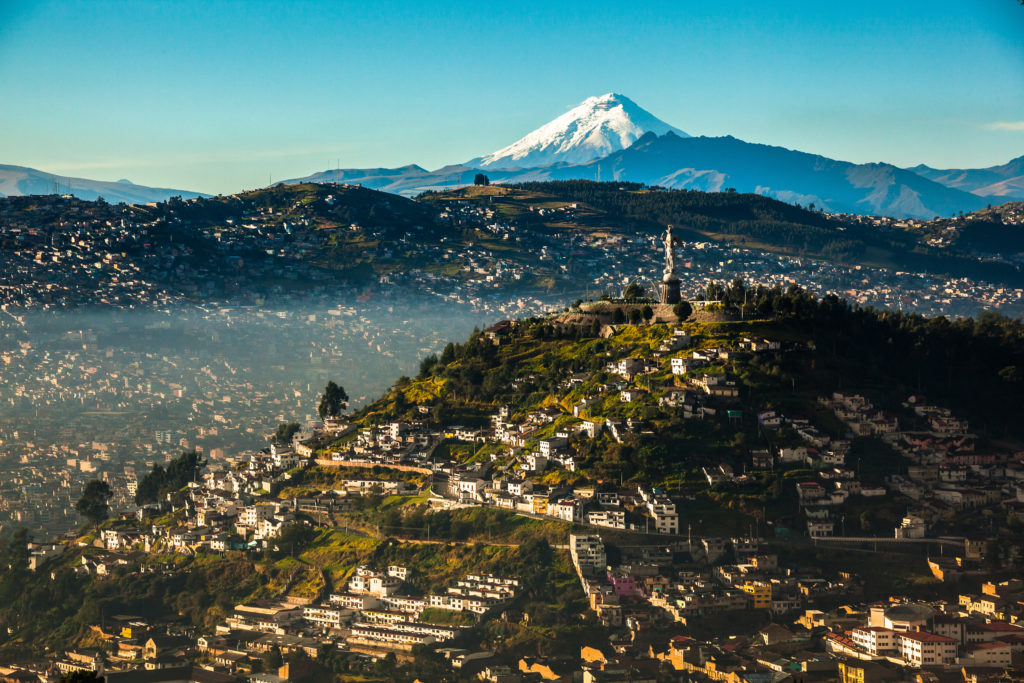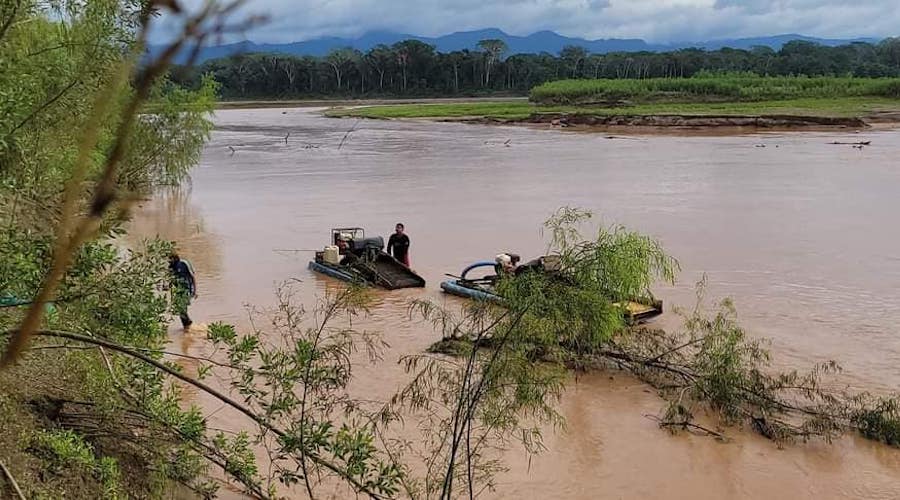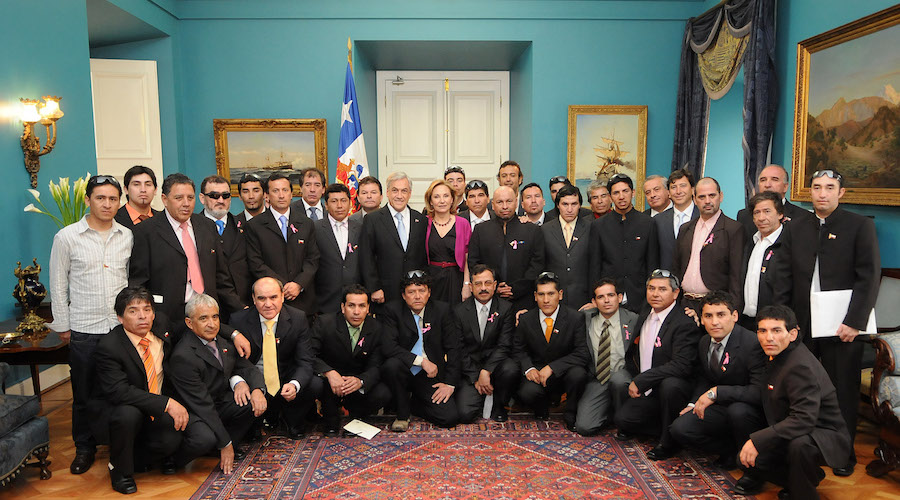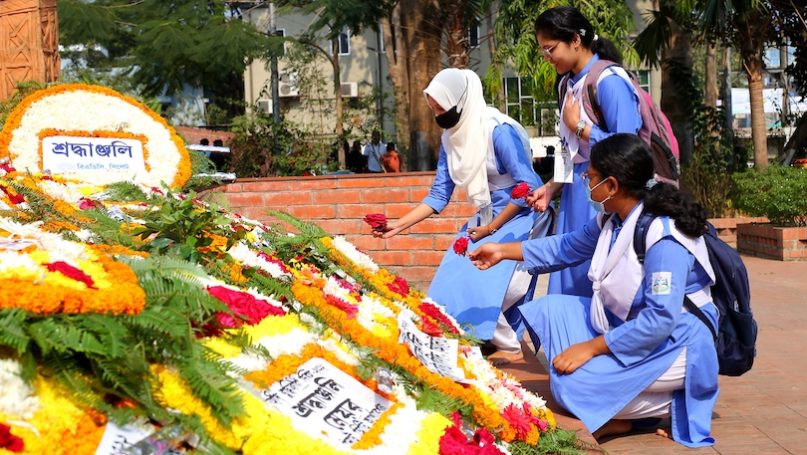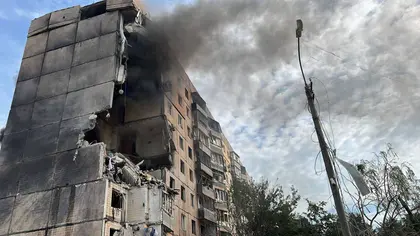In 1971, multiple wars broke out in East Pakistan: a civil war between East and West Pakistan, with East Pakistan aiming to create a separate nation-state of Bangladesh, an internal war between the Bengali and Urdu-speaking populations of East Pakistan, and an international war between India and Pakistan. The war ended on 16th December 1971 with the creation of the independent state of Bangladesh. While these wars are well documented in history, one that has gone by relatively undocumented in formal history is the gender war that broke out against the women of East Pakistan (Saikia 3). In less than nine months, 200,000-400,000 women were raped, and tens of thousands were forcibly impregnated (Takai 193). After the war ended, the newly elected government of Bangladesh eulogised the women victims of rape by giving them the title of Birangona, i.e., brave women, and launched a rehabilitation programme for them (Saikia 64). While these are the statistics for one ethno-nationalist war, evidence for similar gendered wars being waged on women’s bodies can be found for almost all of them — what explains the pervasive nature of sexual violence during ethno-nationalist wars?
Through this paper, I aim to analyse the relationship between using motherhood as the dominant image through which women are symbolised in nationalist projects and the violence perpetrated against them during and in the aftermath of ethno-nationalist wars. I argue that the imagined position of women as reproducers of a nation and markers of its cultural boundaries leads to the violation of their bodily autonomy being interpreted as a transgression of the collective’s boundaries and hence, forms an essential motivation behind the wide-scale perpetration of sexual violence during ethno-nationalist wars. I move on to show that in the aftermath of war, the state recasts women into the same positions as mothers to further its nationalist agendas. To do so, it re-narrativises women’s experiences while simultaneously silencing the voices of individual women that pose a challenge to this narrative. This shapes a distinct form of epistemic violence against women in which they are stripped of their agency to share their own experiences. I study this relationship between the position of women in nationalist discourses and the violence against them through the case study of the Bangladesh Liberation War of 1971.
Masculine Nation, Feminine Boundaries
Since the late eighteenth century, nation-states have formed the dominant mode of organising society. While the definition of a nation has been widely contested, the existing literature can be divided into two categories — first which seeks to define a nation in civic and political terms, and second, which seeks to define it in ethnic, religious and cultural terms. In the former imagination, a nation is defined as a group of territorially bound people governed by the same law and represented by the same legislature (Brubaker 7). In the latter, a nation is conceptualised as a group of people united by their shared history, descent, culture and language, coming together to organise themselves into governable units (Brubaker 12). In both definitions, nations are conceptualised as membership and territorial units.
Theorists of nations and nationalisms agree on another feature of nation-states – all nations are exclusionary by nature, and therefore, the imagination of the nationalist self is closely tied to that of the other. Benedict Anderson puts forth the argument that nations are imagined as “inherently limited” — even the most prominent nations have well-defined boundaries of both their territory and members, beyond which lie other nations and their members (Anderson 7). Boundaries are constructed to divide people into the categories of us and them and stretch them across generations. A variety of political, legal and cultural discourses are employed to build these boundaries of national groups — and it is in the representation and reproduction of such limitations that the role of women becomes visible in otherwise male-dominated nationalist projects.
In primordialist theories, nations are often imagined as extensions of family and kinship relations. In such imaginations, the role of women is understood in the context of familial relations as mothers, daughters and sisters. They are seen to symbolise the family’s and, by extension of it, the nation’s honour and are shown as needing protection by their male counterparts. In non-primordialist theories, women have either been completely ignored or relegated strictly to the private realm. Nira Yuval-Davis and Floya Anthias argue that nationalist discourses construct the role of women in two crucial ways, first, as symbols of national culture and honour (Yuval-Davis 17). Second, by virtue of their ability to bear children, they are viewed as biological producers of the nation and transmitters of its culture (Yuval-Davis and Anthias 7). In doing so, nationalist discourses construct women as the “embodiments of the boundaries of ethnic and national groups” (Yuval-Davis 1, 18). The depiction of women as symbols of national and cultural honour and boundaries, combined with their exclusion from the active body which shapes the nationalist vision, pushes women towards an object rather than a subject position (ibid. 19). As the construction of women as biological producers and embodiments of ethnic boundaries of a nation is ideologically compatible with women’s position as mothers, it breaks down the public/private dichotomy within which women are typically situated. As a result, the imagination of women as nationalist mothers and embodiments of ethnic boundaries becomes acceptable and the dominant form of imagination and national mobilisation in both primordialist and non-primordialist theories of nations.
During the War
Through this section, I aim to analyse how the aforementioned imagination of women as markers and reproducers of the national collective’s boundaries in nationalist discourses shapes the violence perpetrated against them during ethno-nationalist wars. In particular, through the case of the Bangladesh Liberation War, I will focus on two forms of gendered violence perpetrated against women during ethno-nationalist wars — wartime rape and forced impregnation.
Wartime Rape
Ethno-nationalist conflicts, irrespective of their geographical location, root causes, scale and form, have one feature in common — the widespread use of rape against women of the communities involved in the conflict (Peltola 5). The scale and pervasiveness of this form of rape in wars is evident from the coining of the term wartime rape. Jonathan Gotschall defines wartime rape as “the distinct pattern of rape by soldiers at rates that are much increased over rates of rape that prevail in peacetime” (Gotschall 129). He argues that the perpetration of wartime rape differs from rape during peacetime on three fronts: scale, nature and motivation. The scale is at least 300%-400% more than in times of peace, women of all age groups are targeted, mutilation of body parts is common, and at least a part of the motivation is external to individual desire and sexual gratification. Therefore, it is crucial to understand its perpetration as a separate category, as a decisive tactic of war rather than as incidental to the conflict. Strategic rape theory does exactly this. The theory posits that rape is a tactic, a conscious and planned military policy that soldiers perpetrate in service of larger strategic objectives of the war (ibid. 131).
Once understood as a strategy of war, it is vital to ask what motivates the use of the strategy of rape as opposed to other strategies of mass victimisation of women of the enemy community (such as femicide)? Proponents of strategic rape theory, such as Davis Buss, argue that it is because “rape is a crime against a collectivity” (Buss 150). However, the question remains — what makes it possible for the rape of a woman to be interpreted as a crime against the entire collectivity when no other form of violence perpetrated against an individual is perceived as such? I argue that the public imagination of women as the embodiments of a nation’s borders and honour makes it possible for transgressions of their bodily autonomy to be seen as transgressions of the collective’s boundaries by both sides of the war. It allows for the rape of a woman to be interpreted as the victimisation of an entire community which inflicts irreparable harm to the community’s culture and honour. This forms an essential motivation behind its wide-scale perpetration during ethno-nationalist wars.
Several international treaties have defined rape as ‘a crime against honour’ rather than physical, emotional and psychological torture of the victim (“Practice Relating to”). ‘Whose honour?’ is a question that remains unanswered. The construction of women in nationalist discourses allows wartime rape to denote a crime against the honour of men and nations rather than individual women. As we observed earlier, nationalist discourses imagine women in familial roles of mothers, sisters and daughters and ascribe to men the duty of protecting the women and, consequently, the nation. Nitin Pai notes that this image of men as protectors was severely under attack during the Bangladesh War. The Pakistani Army conducted several “search and destroy” operations in the countryside — this involved the burning down of entire villages, which were viewed as aiding rebel fighters (Pai 4). While the men were killed, the women were victims of what Pai refers to as “hit-and-run rapes” — the raping of women in front of their sons, brothers and fathers, who were forced to helplessly watch the atrocities being perpetrated on the women they were ‘supposed to protect’ (ibid.). As the men failed to defend the ‘honour’ of the women, they were seen as having failed in their primary duty as men and citizens. Therefore, wartime rape is also viewed as an act of emasculating and humiliating the men of the enemy community/nation (Gottschall 131) – and this is what motivates its public nature, i.e. rape of women in front of their male family and community members.
In addition to weaponising nationalist tropes of women as embodiments of a nation’s boundaries, wartime rape also instrumentalises traditional patriarchal tropes of ‘female purity’ and ‘masculine protection’. As the woman has now had sexual relations with the enemy, she is shunned by society, and as the man has failed to protect the woman, he is seen to have failed in his primary duty towards his family and his nation. This destroys the family unit and leads to the breakdown of an entire community (Takai 400, Peltola 25). Therefore, the notion that the rape of individual women can be used to defile a whole nation severely increases women’s vulnerability to sexual violence during ethno-nationalist wars.
Forced Impregnation
An important consequence of wartime rape is forced impregnation. Usually viewed as incidental to wartime rape, I argue that, like wartime rape, forced impregnation is a decisive strategy in ethno-nationalist wars, and the motivation behind its perpetration lies in the imagination of women as biological reproducers of a nation. Closely tied to the dominant position of women as nationalist mothers in discourses of nationalism is the expectation of engaging in sexual relations within the national community and reproducing nationalist sons. However, in most patrilineal societies, the child inherits membership to any group — nation, ethnicity, religion — from the father rather than the mother. This allows for a man to violate not just the bodily autonomy of individual women but also the bloodline of the group as a whole.
Forced impregnation threatens the reproductive autonomy of a community in three ways. First, women’s bodies become sites of “forcibly transferring children of one group to another”, and their sexual violation is motivated to threaten the ethnic and genetic composition, i.e. the bloodline of the warring nation (Takai 400, Fisher 93). Second, victims of forced impregnation may be psychologically traumatised and unable to have other sexual and childbearing experiences with members of their own community (Fischer 93). Third, victims of forced impregnation, especially if they choose to raise the child themselves, may no longer be considered marriageable within society. All three of these factors attack women’s imagined positions as biological reproducers and cultural transmitters of the nation and threaten the survival and further reproduction of ‘ethnically pure’ community members. Due to its severe implications for the psychological, religious and ethnic identity of the group, authors such as Hyun-Kyung and MacKinnon argue rape with the motivation of impregnating the victims is genocidal in nature (Gotschall 132).
The Bangladesh War reflects the employment of such a strategy of forced impregnation. Press reports estimate that 200,000-400,000 women were raped during the war, resulting in 195,000 cases of forced impregnations (Mookherjee, “The Spectral Wound”, 143). The fact that these rapes and resulting impregnations were not incidental to the war but a strategy of it is reflected not just in the scale of violence but also in the discourse employed by its perpetrators. Nayanika Mookherjee notes that while speaking of sexual violence perpetrated during the war, her interviewees would recall the Pakistan Army men saying that even though Bangladesh might be able to secede from Pakistan, “we [they] would leave behind a Pakistani in the womb of every Bengali woman” (ibid. 180). She further states that during the war, Bengali men were seen as being “Indianised/Hinduised” and, therefore, as only being “nominally muslim” by the Pakistani state, and rape was seen as a way to “improve the genes of Bengali muslims”, populate the newly independent nation of Bangladesh with “a breed of pure muslims — Pakistanis” (Mookherjee, “Gendered Embodiments”, 39). Tautologically, its own continued existence is of primary significance to any community. As a result, little is more valuable to a collective than its reproductive ability and autonomy. The nationalist notions of women as biological reproducers of the collective, coupled with the patriarchal assertion that a child inherits their ethnicity from their father, creates a reality where forced impregnation of a woman is seen as threatening the nation’s continued existence. Therefore, forced impregnation is employed as a deliberate war strategy as it is seen to constitute one of the gravest threats an army can pose to its enemy community.
Hence, we observe that rape and forced impregnations are war strategies motivated by manipulating image of women as ‘biological reproducers’ and ‘cultural transmitters’ of a nation.
Aftermath of War
Having analysed how women’s imagined position in nationalist discourses shapes the violence against them during ethno-nationalist wars, I now turn towards exploring this relationship in the aftermath of war. The largescale perpetration of wartime rape had two implications: first, it victimised a significant proportion of the newly independent nation’s female population, and second, it bred the state’s anxiety towards the unborn war babies. As a result, the Bangladeshi state needed to reconcile the identity of women as rape victims and those carrying the enemy’s child with one compatible with its nationalist project. I argue that in order to achieve this reconciliation, the state recast them into the same role of nationalist mothers through a combination of discourse and policy, and in doing so, subjected them to diverse forms of violence. I will focus on epistemic violence in particular, which includes “persistent epistemic exclusion that hinders one’s contribution to knowledge production” (Dotson 1).
Nature, Nation, Mother
Throughout the Liberation War, the nation and nature were both feminised and represented through the figures of “respectable, self-sacrificing mothers” in songs, poems and plays (Mookherjee, “Gendered Embodiments” 45). Such an imagination of nature and nation as ‘motherland’, symbolised through women’s bodies, created a strong link between nature, nation and the symbolic depiction of women as mothers. This collective imagination and equation of nation-nature-mother made it possible for the wartime rape of women to be equated to the ravages of nature and the nation of Bangladesh, by the Pakistani Army, during the war. In the equation, the violence perpetrated on women to that performed on the nation’s land (imagined as a mother) by the same enemy alleviated the position of the raped woman to that of an aggrieved mother.
The gendered atrocities perpetrated during the war were re-narrativised through songs, poems and plays. In all sources studied by Mookherjee, wartime rapes depicted were those of cases of “hit-and-run rapes”, i.e. the rape of a woman in front of her male relatives, and they were symbolised through the ravaging of nature by the Pakistani Army (Mookherjee, “The Spectral Wound” 181). As men were forced to silently witness this atrocity perpetrated on their mothers/sisters/daughters, the re-tellings of war show them to be similarly mute spectators to the ravaging of nature and the nation. As a result, in both cases, they are shown to have failed in their ‘duties’ ‘as men’. This creates an image of relative trauma — the trauma of those being violated (women/nature) is depicted relationally to the ‘trauma’ faced by male witnesses of this violation. The dominant imagery was one of the mother (raped woman and mother nature) being wronged, in pain and calling for her (male) children to protect and avenge her (Mookherjee, “Gendered Embodiments” 42, 44). The focus is moved away from the victim towards the men, and it calls upon the men to avenge their mothers and motherland by participating in the war (while it continued) and then in the nation-building processes of the new Bangladesh. Therefore, by collapsing the image of rape of a woman to the ravaging of feminised nature and nation-aestheticised rape in the public imagination. This reconciled the pictures of the raped woman with a mother — an aggrieved mother calling upon her sons to avenge her, in this case — and she could, once again, be effectively employed as a national symbol encouraging the men to participate in the nationalist project.
This reconciliation and instrumentalisation of women’s experiences for the nationalist project was built on silencing individual women’s experiences. In interviews conducted by Mookherjee and Saikia, several women identified their perpetrators as family members, neighbours, and local and national leaders (Saikia 68, Mookherjee, “Remembering to Forget” 443). However, the instrumentalisation of women’s experience to encourage men to be a part of the nationalist project (by avenging the rapes of their mothers by inflicting harm on the Pakistanis) would not have been possible if the perpetrator had been identified as a local. Hence, the Bangladeshi government strategically claimed that all rapes were perpetrated by the ‘Pakistani enemy’ without providing space for survivors to voice their own experiences. In doing so, it transformed the victims of rape into an abstract number of bodies. Experiences identifying the perpetrator as a ‘local’ were systematically erased and forgotten to maintain a farce of ‘national unity’ and fuel sentiments against the ‘Pakistani enemy’. I discuss the different ways in which women’s individual experiences were silenced towards the end of this section.
Illegitimate and Legitimate Motherhoods
As observed in the earlier section, women forcibly impregnated during the war were seen as carrying the ‘enemy’s child’ and reproducing the enemy population in their home country. This posed a threat to the nationalist state, which cast this form of motherhood as “illegitimate” (Mookherjee, “Available Motherhood”, 350). The unborn war baby became a source of anxiety for the state, which sought to eliminate it by establishing control over women’s bodies and sexuality. This was done by setting up rehabilitation centres for victims of wartime rape. The centres facilitated four roles: abortion and international adoption of ‘war babies’ and marriage and financial sustenance of birangonas (Mookherjee, “Available Motherhood” 342, Saikia 67). Hastily, laws legalising abortion and international adoption were passed in 1971 and repealed as soon as the process was completed (ibid. 347, 349).
The state mandated an abortion programme through the rehabilitation centres, and women were compelled to accept the state’s intervention if they wanted to be included within the new Bangladesh and avail of the centre’s services (ibid.). Women too far into their pregnancy terms were mandated to give away their children for international adoption (Mookherjee, “Available Motherhood” 342). Abortion and international adoption were seen as methods of not only getting rid of the “Pakistani children” from Bangladesh but also of “cleansing” the women’s bodies by making them “unavailable” to the emotions of motherhood for an “illegitimate” child (ibid. 339, 348). Both Saikia and Mookherjee note several cases of forced abortions and adoptions — constituting yet another form of violence against women in the aftermath of ethno-nationalist wars. Once they were physically and physiologically expunged of the ‘war-babies’, the centres facilitated their reintegration into society and, specifically, their marriages to Bangladeshi men (ibid. 249). This ensured that the women were instituted within heterosexual marital alliances with men from the same community and could reproduce Bangladeshi children again. As a result, the birangonas were, once again, made available for a “legitimate” form of motherhood and could now occupy the position of nationalist mothers in people’s collective imagination.
All records of abortions and international adoptions, including details about the women on whom these procedures were performed/gave away their children for adoption, were burnt by centre workers to facilitate their “smooth assimilation” into society (Mookherjee, “The Spectral Wound” 151). As a result, there is no real-time documentation about the nature of these processes and women’s own consent (or lack thereof) to being a part of them. While on the one hand, the birangonas were once again cast in the roles of nationalist mothers in the public sphere, on the other hand, the experiences of individual women were systematically erased and appropriated (as being voluntary choices) by the state. Therefore, we observe that the state’s construction of an ideal of a birangonas as “cleansed, nationalist mothers” was built on and sustained by the systemic silencing of individual women’s experiences.
Forced Silences
Once “reintegrated into the society”, mostly through marriage alliances, women were also systematically dissuaded from sharing their war or rehabilitation centres experiences. This silencing happened by subjecting those who sought to accept the title of birangona to khota — khota is a Bengali word that refers to scorn that was directed at such women through everyday normative discourses in Bangladesh (Mookherjee, “Remembering to Forget” 434, 435, 438). It did not take long for the term birangona to be twisted into the slur barangona meaning “penetrated”, which is used to denote prostitutes (Saikia 66). Women received compensation when they shared their experiences with news agencies, academics or lawyers (Mookherjee, “Remembering to Forget”, 438). In the state’s rehabilitation programme, women who claimed the status of birangona, either received money and land to sustain themselves or were married off to a Bangladeshi man who was “rewarded” with money for their willingness to “accept and transform” the birangona (Saika 67). As the monetary exchange was involved in all these cases, women who claimed the status of birangona were labelled as barangonas in everyday discourses and were again shunned through the violence of khota. Furthermore, a “true” survivor was constructed to be one who would attempt to conceal their experience of rape, be ashamed of it and refuse to acknowledge or speak about it publicly (Mookherjee, “Remembering to Forget”, 440). Therefore, women who claimed the status of birangona were disbelieved by the locals and seen as opportunistic (ibid.). This meant that in addition to the realm of material evidence, individual women’s experiences were also systematically erased from the realm of discourse.
Through this section, I have shown that in order to recast women into the imagination of nationalist mothers, and symbols of nationalist mobilisation and continuation, the state strips women of their agency and systemically silences and erases their individual experiences. This deliberate strategy to silence the women in order to fit their experiences into a nationally acceptable mould shapes a distinct form of epistemic violence against them in the aftermath of war — one that appropriates and misrepresents women’s experiences and in doing so, denies them the epistemic space for their experience to be acknowledged as history and be a part of the “knowledge” about the war.
Conclusion
Through this paper, I have analysed the relationship between forms of violence perpetrated against women during and in the aftermath of ethno-nationalist wars and their position in nationalist discourses. I have argued that women’s imagined position as reproducers of a nation and markers of its cultural boundaries leads to the violation of their bodily autonomy being interpreted as a transgression of the collective’s boundaries, and in doing so, forms an essential motivation behind the wide-scale perpetration of sexual violence during ethno-nationalist wars. I have then proceeded to analyse this relationship in the aftermath of war and argued that the state subjects women to a distinct form of epistemic violence in efforts to recast them in positions of nationalist mothers. Therefore, throughout the paper, we have observed how the imagination of women in nationalist discourses constitutes them as political signs, as symbols of national honour and boundaries, which shapes the violence against them both during and in the aftermath of war. In doing so, it creates a reality wherein women’s bodies become sites on which wars are waged, and power gets inscribed.
Works Cited:
Anderson, Benedict. Imagined Communities: Reflections on the Origin and Spread of Nationalism. Verso, 2016.
Brubaker, Rogers. Citizenship and Nationhood in France and Germany. Harvard University Press, 1996.
Buss, David M., and Neil M. Malamuth. Sex, Power, Conflict Evolutionary and Feminist Perspectives. Oxford University Press, 1996.
Dotson, Kristie. “Conceptualizing Epistemic Oppression.” Social Epistemology, vol. 28, no. 2, 2014, pp. 115–138., doi:10.1080/02691728.2013.782585.
Fisher, Siobhan K. Occupation of the Womb: Forced Impregnation as Genocide. www.jstor.org/stable/1372967.
Gottschall, Jonathan. “Explaining Wartime Rape.” The Journal of Sex Research, vol. 41, no. 2, 2004, doi:10.1080/00224490409552221.
Mookherjee, Nayanika. Available Motherhood: Legal Technologies, `State of … 2007, DOI:10.1177/0907568207079213.
Mookherjee, Nayanika. “Gendered Embodiments: Mapping the Body-Politic of the Raped Woman and the Nation in Bangladesh – Nayanika Mookherjee, 2008.” SAGE Journals, 2008, https://doi.org/10.1057/palgrave.fr.9400388.
Mookherjee, Nayanika. ‘Remembering to Forget’: Public Secrecy and Memory of … Journal of Royal Anthropological Institute, 2006, DOI:10.1111/j.1467-9655.2006.00299.x
Mookherjee, Nayanika. The Spectral Wound: Sexual Violence, Public Memories, and the Bangladesh War of 1971. Duke University Press, 2015.
Pai, Nitin. The 1971 East Pakistan Genocide – A Realist Perspective. www.genocidebangladesh.org/wp-content/uploads/2008/03/eastpakistangenocide1971-realistperspective1.pdf.
Peltola, Larissa, “Rape and Sexual Violence Used as a Weapon of War and Genocide” (2018). CMC Senior Theses. 1965. https://scholarship.claremont.edu/cmc_theses/1965
“Practice Relating to Rule 93. Rape and Other Forms of Sexual Violence.” Customary IHL – Practice Relating to Rule 93. Rape and Other Forms of Sexual Violence, ihl-databases.icrc.org/customary-ihl/eng/docs/v2_rul_rule93.
Saikia, Yasmin. Women, War, and the Making of Bangladesh: Remembering 1971. Duke University Press, 2011.
Takai, Alexandra. Rape and Forced Pregnancy as Genocide before the Bangladesh Tribunal. sites.temple.edu/ticlj/files/2017/02/25.2.Takai-TICLJ.pdf.
Yuval-Davis, Nira, and Floya Anthias. Woman-Nation-State. Macmillan, 1989.
Yuval-Davis, Nira. Gender and Nation: Sage Publications. Sage Publications, 1997.
Further Reading on E-International Relations





